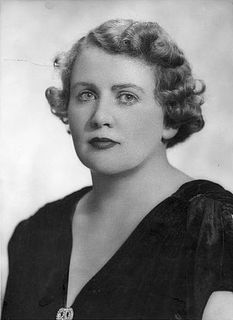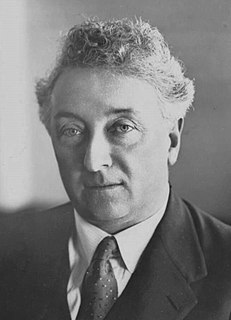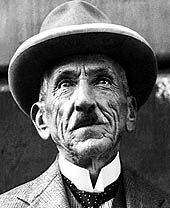| |||||||||||||||||||||||||||||||
All 74 seats in the House of Representatives 38 seats were needed for a majority in the House 19 (of the 36) seats in the Senate | |||||||||||||||||||||||||||||||
|---|---|---|---|---|---|---|---|---|---|---|---|---|---|---|---|---|---|---|---|---|---|---|---|---|---|---|---|---|---|---|---|
| |||||||||||||||||||||||||||||||
| |||||||||||||||||||||||||||||||
Federal elections were held in Australia on 21 August 1943. All 74 seats in the House of Representatives and 19 of the 36 seats in the Senate were up for election. The incumbent Labor Party, led by Prime Minister John Curtin, defeated the opposition Country–UAP coalition under Arthur Fadden.

Elections in Australia take place periodically to elect the legislature of the Commonwealth of Australia, as well as for each Australian state and territory. Elections in all jurisdictions follow similar principles, though there are minor variations between them. The elections for the Australian Parliament are held under the federal electoral system, which is uniform throughout the country, and the elections for state and territory Parliaments are held under the electoral system of each state and territory.

The House of Representatives is the lower house of the bicameral Parliament of Australia, the upper house being the Senate. Its composition and powers are established in Chapter I of the Constitution of Australia.

The Senate is the upper house of the bicameral Parliament of Australia, the lower house being the House of Representatives. The composition and powers of the Senate are established in Chapter I of the Constitution of Australia. There are a total of 76 Senators: 12 are elected from each of the six states regardless of population and 2 from each of the two autonomous internal territories. Senators are popularly elected under the single transferable vote system of proportional representation.
Contents
Fadden, the leader of the Country Party, was serving as Leader of the Opposition despite the Country Party holding fewer seats in parliament than the United Australia Party (UAP). In August 1941, he had been chosen by the coalition parties to lead the government after the forced resignation of Prime Minister Robert Menzies, the UAP leader. However, he stayed in office for only six weeks before the two independents who held the balance of power joined Labor in voting down his budget. Governor-General Lord Gowrie was reluctant to call an election for a parliament barely a year old, especially considering the international situation. At his urging, the independents threw their support to Labor for the remainder of the parliamentary term.
The National Party of Australia is an Australian political party. Traditionally representing graziers, farmers, and rural voters generally, it began as the Australian Country Party in 1920 at a federal level. It would later briefly adopt the name National Country Party in 1975, before adopting its current name in 1982.
The United Australia Party (UAP) was an Australian political party that was founded in 1931 and dissolved in 1945. The party won four federal elections in that time, usually governing in coalition with the Country Party. It provided two Prime Ministers of Australia – Joseph Lyons (1932–1939) and Robert Menzies (1939–1941).

Sir Robert Gordon Menzies,, was an Australian politician who twice served as Prime Minister of Australia, in office from 1939 to 1941 and again from 1949 to 1966. He played a central role in the creation of the Liberal Party of Australia, defining its policies and its broad outreach. He is Australia's longest-serving prime minister, serving over 18 years in total.
Over the next two years, Curtin proved to be a very popular and effective leader, and the Coalition was unable to get the better of him. Labor thus went into the election in a strong position, and scored an 18-seat swing on 58 percent of the two-party vote. The Coalition saw its seat count cut in half, to 19 seats—including only seven for the Country Party. Notably, Labor won every seat in Western Australia and all but one in South Australia. Archie Cameron, the member for Barker, South Australia, was left as the only Coalition MP outside the eastern states.

Western Australia is a state occupying the entire western third of Australia. It is bounded by the Indian Ocean to the north and west, and the Southern Ocean to the south, the Northern Territory to the north-east, and South Australia to the south-east. Western Australia is Australia's largest state, with a total land area of 2,529,875 square kilometres, and the second-largest country subdivision in the world, surpassed only by Russia's Sakha Republic. The state has about 2.6 million inhabitants – around 11 percent of the national total – of whom the vast majority live in the south-west corner, 79 per cent of the population living in the Perth area, leaving the remainder of the state sparsely populated.

South Australia is a state in the southern central part of Australia. It covers some of the most arid parts of the country. With a total land area of 983,482 square kilometres (379,725 sq mi), it is the fourth-largest of Australia's states and territories by area, and fifth largest by population. It has a total of 1.7 million people, and its population is the second most highly centralised in Australia, after Western Australia, with more than 77 percent of South Australians living in the capital, Adelaide, or its environs. Other population centres in the state are relatively small; Mount Gambier, the second largest centre, has a population of 28,684.

Archie Galbraith Cameron was an Australian politician. He was a government minister under Joseph Lyons and Robert Menzies, leader of the Country Party from 1939 to 1940, and finally Speaker of the House of Representatives from 1950 until his death.
This election was significant in the fact that it resulted in the election of the first female member of the House of Representatives, the UAP's Enid Lyons for Darwin, Tasmania; and the first female Senator, Labor's Dorothy Tangney in Western Australia. The election remains Labor's greatest federal victory in terms of proportion of seats and two-party votes in the lower house, and primary vote in the Senate.

Dame Enid Muriel Lyons was an Australian politician who was the first woman elected to the House of Representatives and the first woman to serve in federal cabinet. Prior to her own political career, she was best known as the wife of Joseph Lyons, who was Prime Minister of Australia (1932–1939) and Premier of Tasmania (1923–1928).
The Division of Darwin was an Australian Electoral Division in Tasmania.

Dame Dorothy Margaret Tangney DBE was an Australian politician and the first woman member of the Australian Senate.
The lack of effective opposition to the Labor party in the lead up and following the election became the catalyst for the creation of the Liberal Party of Australia from the ashes of the UAP, and for George Cole & Keith Murdoch among other big business magnates to form the conservative propaganda think tank the Institute of Public Affairs.

The Liberal Party of Australia is a major centre-right political party in Australia, one of the two major parties in Australian politics, along with the centre-left Australian Labor Party (ALP). It was founded in 1944 as the successor to the United Australia Party (UAP).
The Institute of Public Affairs (IPA) is a conservative public policy think tank based in Melbourne, Victoria, Australia. It advocates free market economic policies such as privatisation and deregulation of state-owned enterprises, trade liberalisation and deregulated workplaces, climate change scepticism, the abolition of the minimum wage, and the repeal of parts of the Racial Discrimination Act 1975.
This was the last major election that did not involve the current Liberal and Labor Party competition.











